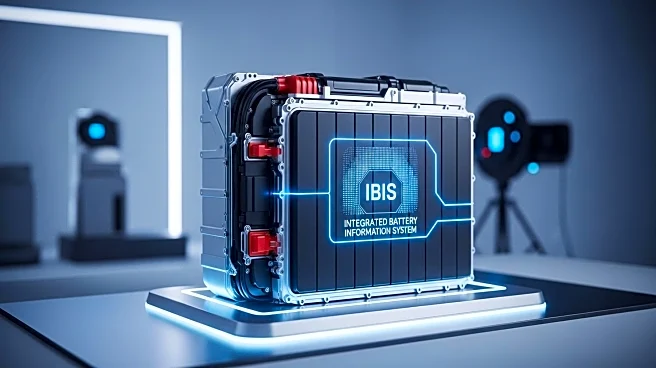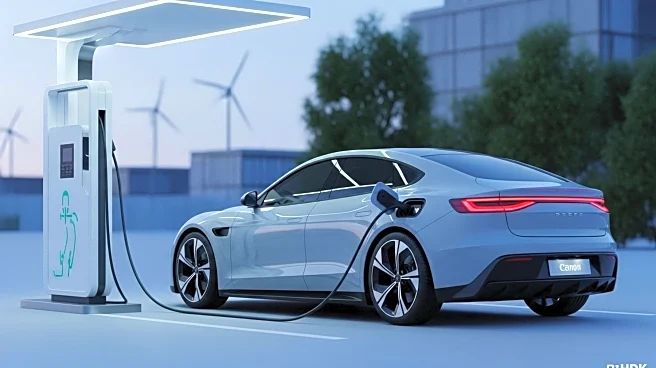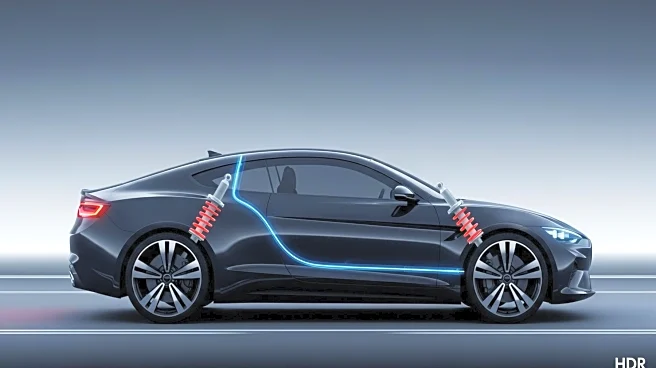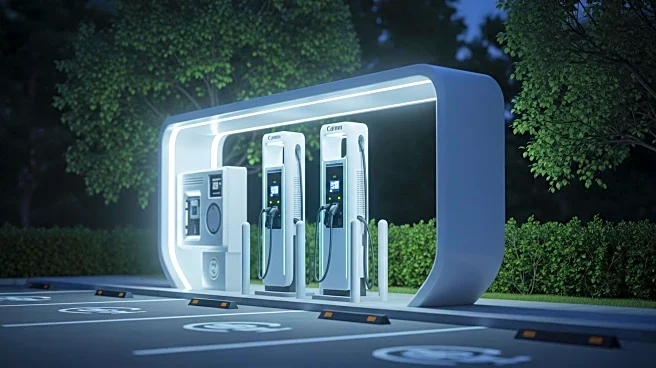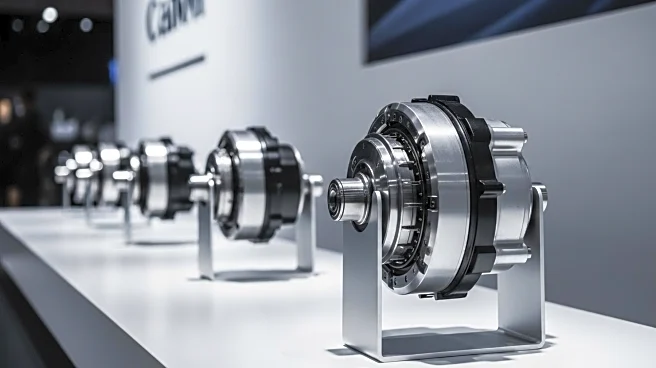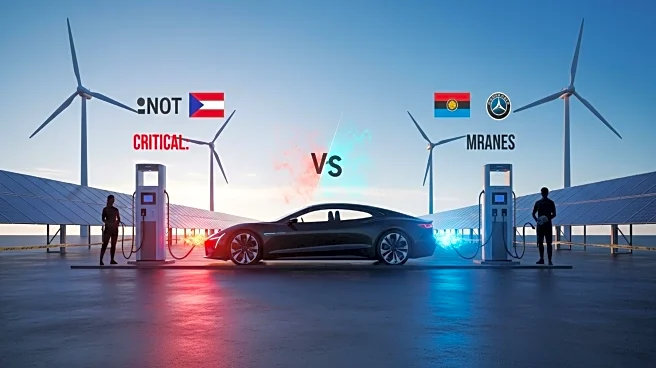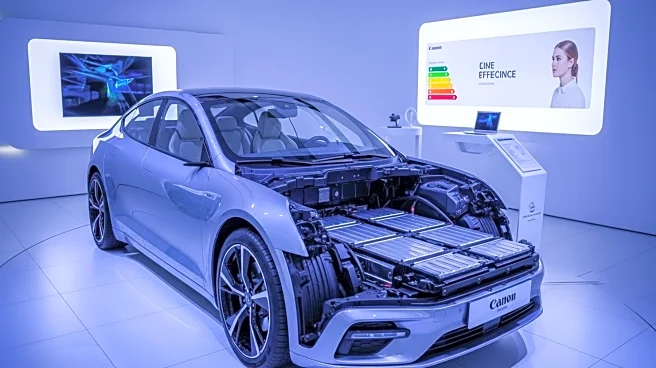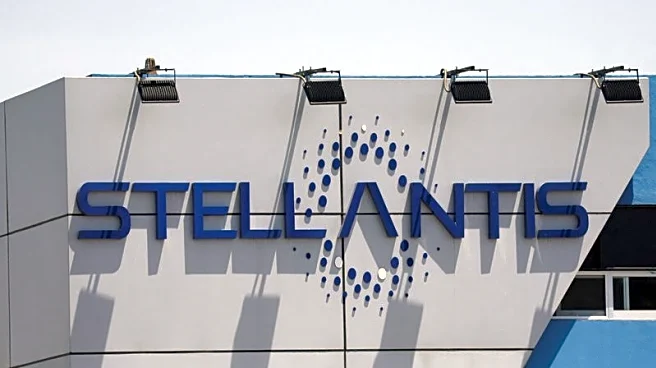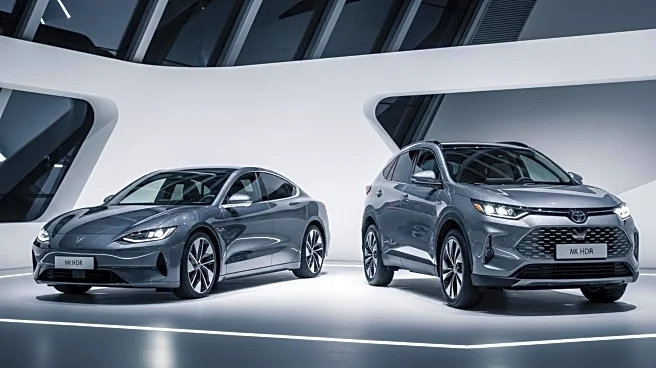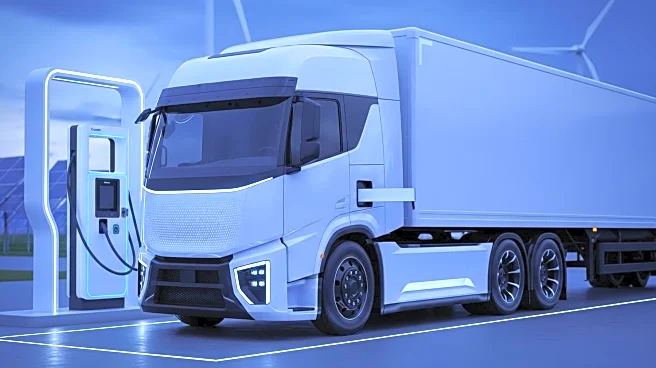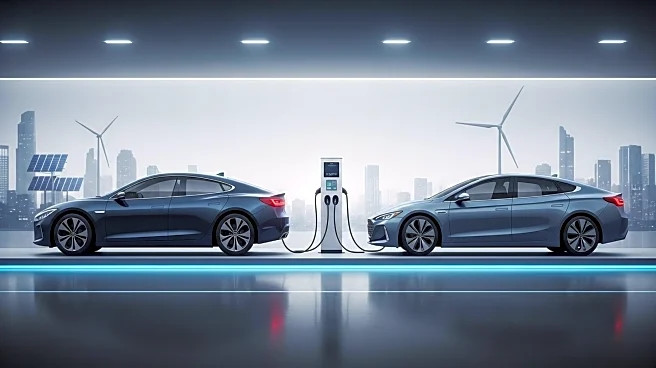What is the story about?
What's Happening?
Stellantis has introduced its Intelligent Battery Integrated System (IBIS), a new technology designed to enhance electric vehicle efficiency and performance. Co-developed with Saft, Sherpa Engineering, Université Paris-Saclay, and Institut Lafayette, the IBIS system integrates charger and inverter functions directly into the battery pack. This integration reduces design complexity, saves interior space, and simplifies maintenance. The technology promises up to a 10% improvement in energy efficiency and a 15% power gain, while reducing vehicle weight by approximately 40 kg. The first fully functional IBIS-equipped battery electric vehicle is ready for road testing, marking a significant milestone in Stellantis' EV development.
Why It's Important?
The introduction of the IBIS system by Stellantis represents a significant advancement in electric vehicle technology, potentially setting a new standard for efficiency and cost-effectiveness in the industry. By simplifying the powertrain architecture, Stellantis aims to deliver more affordable EVs, which could accelerate the adoption of electric vehicles globally. The system's ability to facilitate second-life battery applications also addresses sustainability concerns, offering a solution for battery reuse in energy storage systems. This innovation could position Stellantis as a leader in the EV market, challenging competitors to develop similar technologies.
What's Next?
Stellantis plans to integrate the IBIS technology into its electric and hybrid production vehicles by the end of the decade. The successful road testing of the IBIS-equipped Peugeot E-3008 prototype will be crucial in determining the feasibility of widespread implementation. As the technology progresses, Stellantis may face reactions from competitors and industry stakeholders, potentially influencing future EV design and manufacturing standards.
AI Generated Content
Do you find this article useful?
